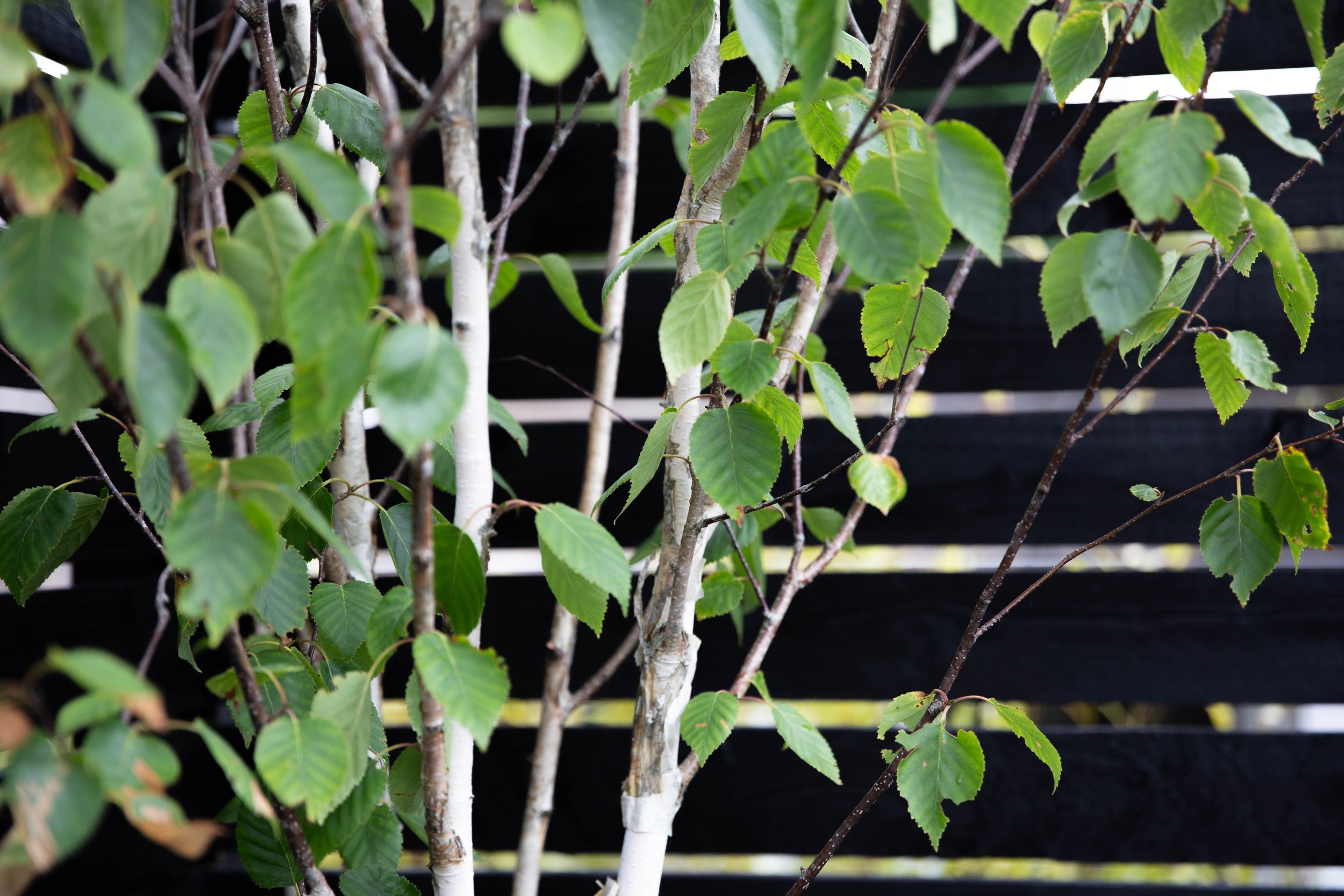Plant guide: White Himalayan birch
Planted en masse outside the Tate Modern, as part of the Winter garden at Anglesey Abbey, and in gardens across the country, the White Himalayan birch is a popular variety of Silver birch, known for its glorious, brilliantly white stem.
A truly striking deciduous tree, Betula utilis var. jacquemontii (to give it its full botanical name) works especially well as a statement plant in a small garden, planted in a line along a boundary, or grown in pots in a courtyard garden.
With catkins in Spring, the characteristic weeping leaves of a birch that rustle in the wind, yellow Autumn colour and then those eye-catching white stems in Winter, this is a tree that offers interest through every season of the year.
Botanical name: Betula utilis subsp. jacquemontii
Plant type: Deciduous tree.
Standard and multi-stem varieties are available. A standard is a tree that grows with one single trunk growing upwards from the ground for a distance before the branches begin. A multi-stem variety has been grown so that a number of stems appear and grow upwards in a V shape from just above the ground. These tend to be slower growing and work especially well in pots (as in the photo above).
Growing conditions:
Betula jacquemontii need a spot with full sun to part shade. It is a relatively slow growing tree, reaching a height of about 3m after a decade, so they don’t need a huge amount of space around them. If grown as a group, they can be planted as close as a metre apart, where the competition for light will mean they grow upwards, rather than outwards, creating an elegant clump – you can see beautiful examples of these at Anglesey Abbey and outside the Tate Modern.
If grown in a mixed border, the relatively thin canopy of leaves creates dappled shade below the tree, where many other plants can thrive.
It prefers moist but well drained soil, but can tolerate less ideal conditions. Avoid planting in coastal gardens, as birches don’t thrive in salty areas.
It’s a popular tree to plant along a boundary in a small or urban garden, as it is not a dense growing tree, so provides interest and some screening, without blocking out sun (or annoying your neighbours!)
How to plant:
Trees are available as bare root or container grown. Bare root trees should be planted between November and March. Container grown trees can be planted any time of the year, provided the ground isn’t frozen or waterlogged, though Autumn time is usually the easiest for ongoing care.
If you’re planting a container grown tree, dig a hole as deep as the container, and roughly twice as wide. Place the tree into the hole, making sure the top of the compost from the container is at the same level as the surrounding soil. Back fill the hole.
You will need to water the tree well during any dry periods for the first year. (Generally speaking, the summer months.)
Grow with:
Himalayan White Birch works with a huge range of different planting styles. Underplanted with spring bulbs and herbaceous perennials, it can help create an elegant cottage garden vibe. Backlit against a black fence, a row of Betula jacquemontii can create a stunning architectural statement in a modern urban garden. And grown in pots with a mass of deep green ferns underneath, they can create a lush focal point.
Care:
Once established in the ground (after its first year), Himalayan birch needs little attention. In a very prolonged dry spell over Summer, it could help to give it some extra water, but generally speaking it will be able to look after itself.
If it’s growing in pots, then watering is essential throughout the summer months, and for any extended dry spells at other times. It will need fertilising for the growing months (Spring to the start of Autumn). You can add a slow release fertiliser in Spring, which will provide nutrients for the following months, or instead feed occasionally with a liquid feed. We use liquid seaweed a few times in the Summer.
Pruning may be needed, either to maintain the aesthetics of the way it is growing, or to remove damaged branches. This should be done in late Summer to early Autumn, as this is the only time when birches don’t have a steady flow of sap, which would “bleed” heavily at other times of the year, and also can cause infection or attract disease carrying insects.




